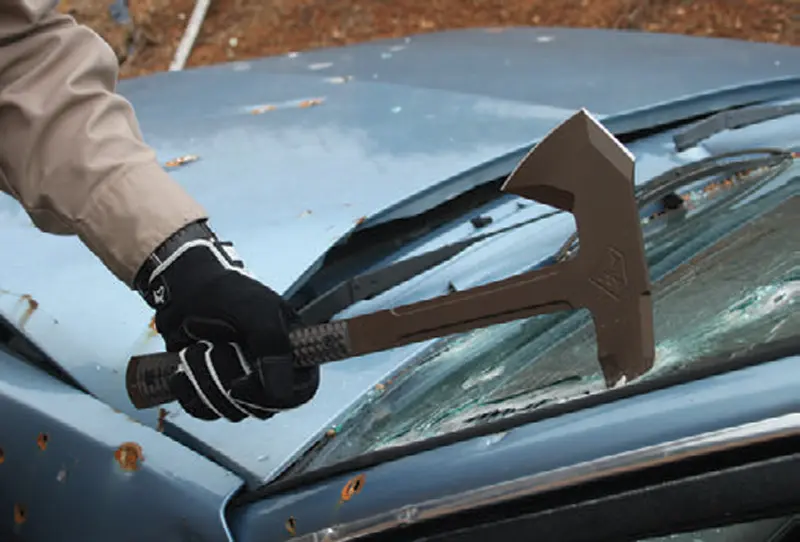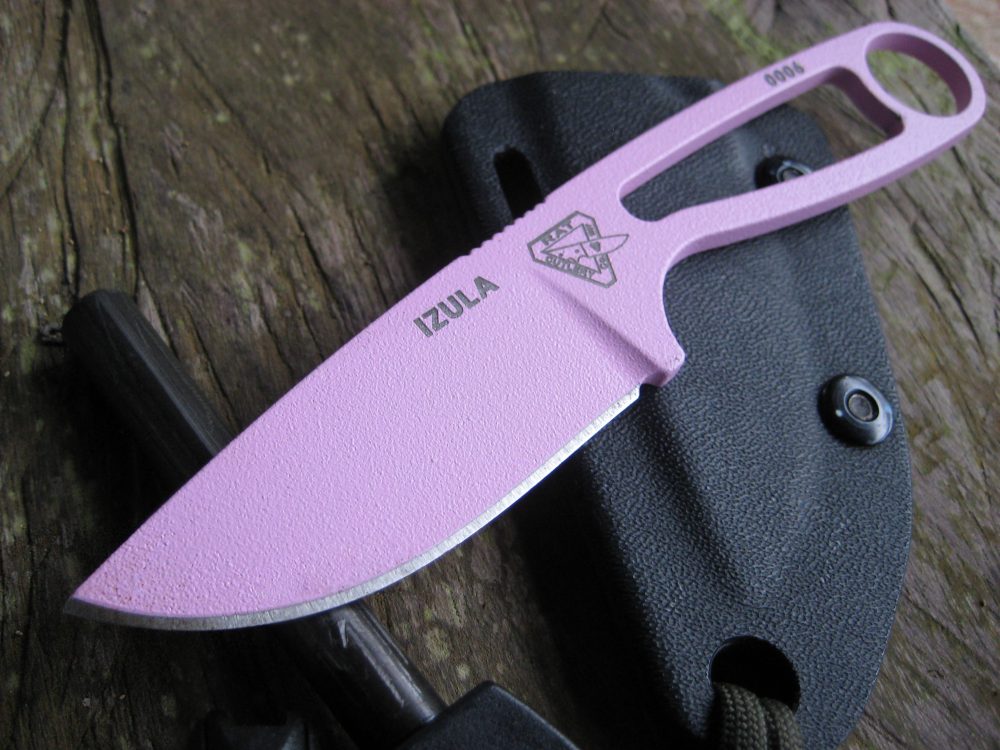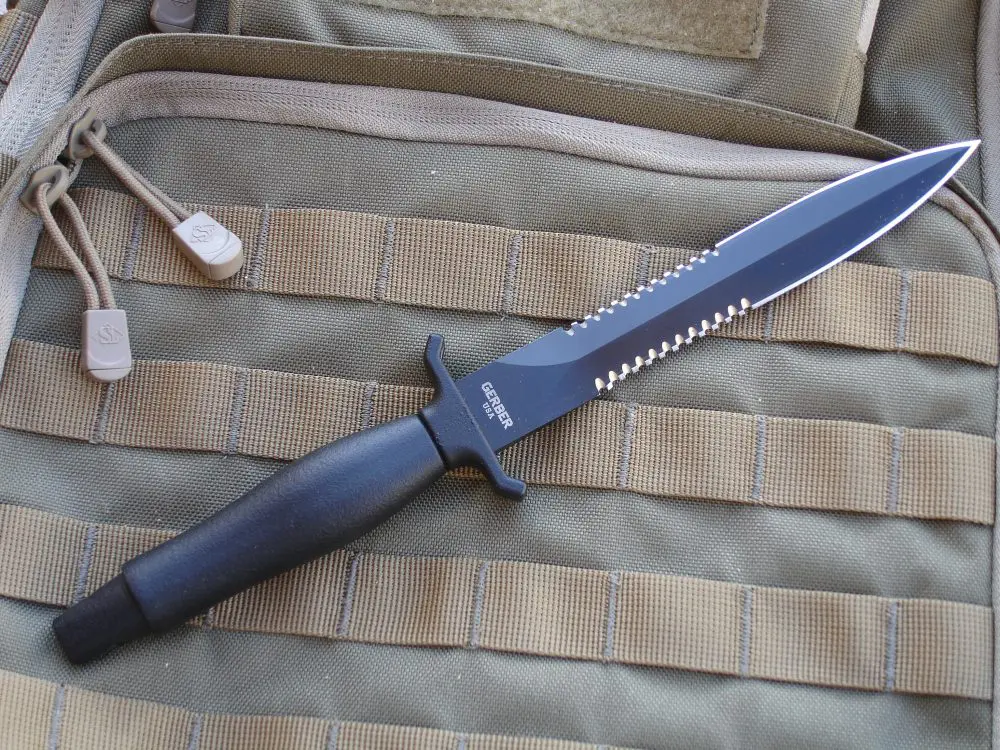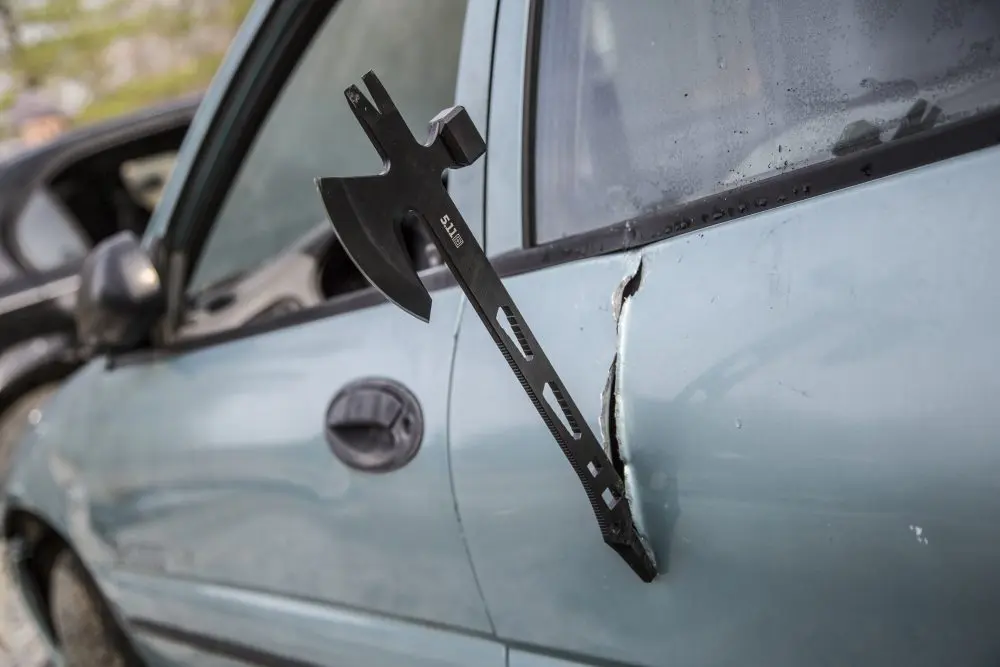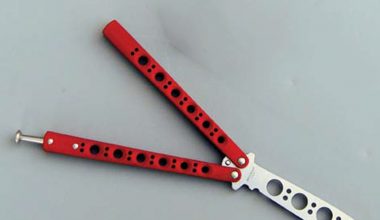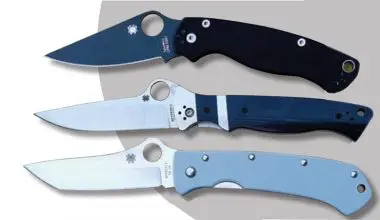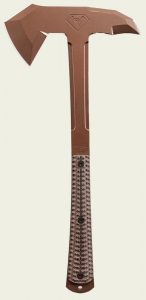
THE tomahawk is as distinctly an American weapon as the kukri is for the legendary Gurkhas. Tomahawks originated in North America among the Iroquoian and Algonquian Indians, who used them as tools, weapons, and ceremonial pieces. “Tomahawk” is from the Algonquin for “to strike down.” The first tomahawks were made with wooden shafts and heads of bone, rock, or wood.
Europeans introduced metal heads and traded the tomahawks with the Indians, who quickly became adept at using them in battle and prized the refinement that metal offered their tomahawks. Frontiersmen and settlers were quick to adopt and adapt the Native American tomahawk.
Tomahawks have been a mainstay of utility in the military for a long time, with the same features attracting civilians and to a lesser degree law enforcement. In fact, the Continental Congress required militiamen to carry either a tomahawk or a cutting sword. Flintlock guns were unreliable and slow to reload, and the tomahawk made an excellent back-up weapon for hand-to-hand combat.
Tomahawks have earned their place as gear worthy of having around, satisfying tasks such as clearing, constructing shelter, digging, breaching, and handto- hand combat. Our current military personnel use the “hawk” in the same ways as the men of Rogers’ Rangers and others involved in settling the Ohio River territory did. Combat engagements
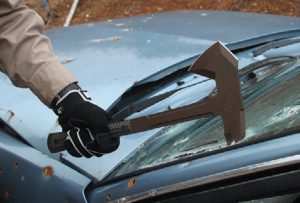
are often closerange affairs, where an enemy could appear suddenly. The extra power and reach of the tomahawk over the knife are invaluable.
In the modern era, the tomahawk experienced a resurgence in popularity in Vietnam that has continued to accelerate in Iraq and Afghanistan. Soldiers mostly use it as a handy multi-purpose tool capable of breaching doors, deflating tires, smashing windows, breaking locks, chopping through cinder blocks, and opening crates. The distinctly American nature of the tomahawk adds a level of pride and esprit de corps.
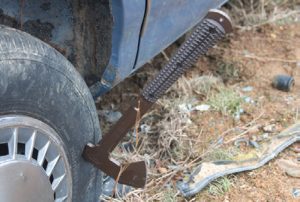
DOUBLESTAR WRATH
DoubleStar has upped the ante with the Wrath tomahawk, which attracts attention with its no-nonsense aesthetics. Rob Cabrera of Filo Bladeworks designed the Wrath.
Conversations with Rob indicated that breaching capability while maintaining CQB potency were the priorities with the Wrath. A well-made Kydex sheath accompanies the Wrath. Numerous slots and eyelets let users fit the Wrath to their carry needs.
DoubleStar wanted the Wrath heavy enough for breaching but lightweight enough to be usable in close quarters and kept on your person without causing discomfort. This was accomplished by using S7 tool steel and a keen eye during design conception. S7 tool steel is characterized by a very high-impact toughness (jackhammer bits) and resistance to shock load.
Proper blade tempering is important for a tomahawk’s durability due to the twisting and impact forces—a blade too hard bordering on brittleness is not ideal. With RC 58 hardness rating, the Wrath balances edge retention while allowing sharpening with basic files or stones when in the field.
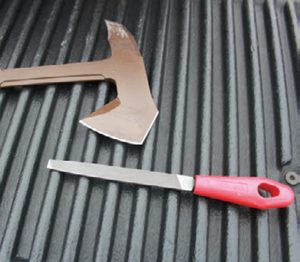
Further attention to detail is how the tempering was modified where the Wrath’s head meets the handle. The priority was ensuring that a failure during extreme use would not result in the head shearing off. DoubleStar Bronze Cerakote™ finish completes the outward appearance.
The Wrath tomahawk’s head has a distinctive face and beard configuration for durability and lethality. Rob Cabrera purposely created a front bit profile with upper and lower edges coming together to form a point, which focuses kinetic energy to assist in breaching metal.
An extended front beard adds to the available cutting surface. By gripping the Wrath’s handle near the head, the sharpened edges can be wielded with the efficiency of a knife. The same technique would facilitate the field dressing and skinning of an animal for food. Various wood whittling was done to determine if the Wrath could handle the finer details of creating a snare or other types of animal traps. The Wrath handled all these tasks with ease—a true compliment to Cabrera’s design and DoubleStar’s execution of it.
The Wrath weighs two pounds and measures 16.5 inches. Its handle thickens toward the bottom, which helps maintain a steady grip even as fatigue sets in after heavy use.
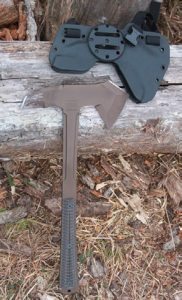
G10 textured grips enhanced with custom raised pinnacled knurling finish off the Wrath. The Wrath’s G10 scales are easily disassembled and removed from the handle for thorough cleaning of blood-borne pathogens, an important consideration in survival or CQB environments.
When wielding the Wrath, I was surprised by its relatively light weight. The weight balance of a tomahawk should be toward the head for efficient chopping, but it shouldn’t feel like a sledgehammer either. Proper handleto- weight ratio translates into less fatigue and wrist strain when employing the tomahawk.
The user wants something light enough to carry but heavy enough to chop and slash efficiently. The Wrath lets soldiers and individuals increase capability with minimal weight added to the already heavy load they carry in the field or operating in a survival situation.
I took advantage of access to Echo Valley Training Center’s range vehicles for breaching purposes. A professional firefighter was invited to assist. Laminated front windshields could not resist being methodically carved out for removal. Side doors, trunk lids, and A-frames were cleaved through after a few well-placed strikes.
The Wrath’s scalloped rear spike offers enhanced penetration power in sheet metal. The force and intensity required to get through a vehicle’s sheet metal and bracing have to be experienced to be truly fathomed. A tomahawk intended for this role must be stout. The DoubleStar Wrath is such a tool.
The Wrath retained its edge well into the abuse cycle it was put through and was easily refurbished with a file.
DoubleStar bridges the gap between custom knife makers and production manufacturers. The Wrath exemplifies DoubleStar’s attentionto- detail designs mated to quality raw materials and finished to a high standard.
